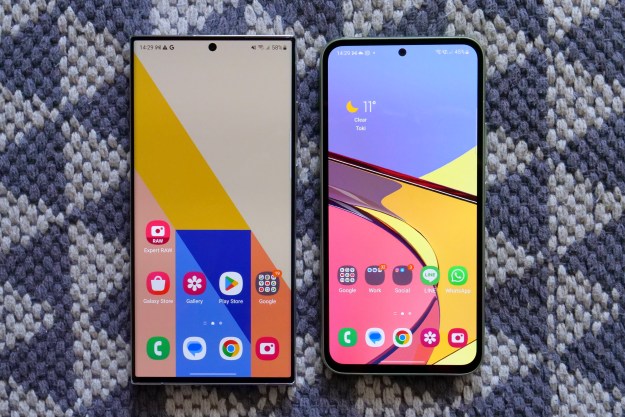
Google Android has been incredibly successful, but it has also been wrapped in a series of problems. A good deal of the problems come from Google’s attempt to tear down the software licensing model Microsoft had been using for years. Much like if you try to put a round peg in a square hole, this kind of thing results in problems.
Interestingly enough, Qualcomm has come up with what may be the best, though least well-known, way to make a better Android phone. I was on-site at Qualcomm this week, and I think I can explain why some of the most successful Android phones run Qualcomm technology.
The Microsoft World
In a Microsoft world, Microsoft makes the platform, tends to get most of the profit, and pays for most of the marketing. The way this typically works, Microsoft delivers a very complete and locked-down software product to the OEMs, whether they build PCs or phones. These OEMs pay Microsoft, and Microsoft kicks back a percentage, which goes directly to that OEM’s marketing department to sell the device. In many cases, virtually the entire marketing budget for a new PC or Microsoft phone is sourced from this process.
The OEMs complained up a blue streak that this model didn’t allowed them to differentiate. Basically, rather than Microsoft providing outsourced software for them (effectively serving as their underlings) they had all become outsourced hardware for Microsoft (they were Microsoft’s underlings). In short they really didn’t like working for Microsoft.
 The Android Problem
The Android Problem
Google parachuted into this world with Android. The company gave it away for free, didn’t lock it down, and left it unfinished in order to address this huge concern about differentiation. However this became, particularly for tablets, the round peg in a square hole. The OEMs didn’t have the skill set to finish the product, because in a Microsoft world, they didn’t need it. Smartphones and tablets were more like PCs then they were like regular phones. Google didn’t kick back marketing money because it wasn’t being paid. The savings should have allowed the OEMs to fund marketing themselves, but instead they went for more aggressive pricing, leaving nothing for marketing.
So instead of getting better differentiated products, we generally ended up with very similar, less reliable, under-marketed products. There were exceptions. Motorola’s Xoom tablet got a lot of marketing, but was both unfinished and overpriced — to pay for that marketing. Verizon stepped and did the marketing for Motorola and HTC on the Droid phones, but created a new problem for the OEMs because the Droid branding belonged to Verizon – the OEMs were back to being “outsourced hardware” again.
Some of the Android phones are good, many aren’t, and no Android Tablet has even worried Apple yet. More troubling is that Android typically does better with carriers who don’t have the iPhone, suggesting it is just a placeholder until the iPhone gets to that carrier in the latest version.
Google had a good idea, the market just wasn’t ready for it, and Google didn’t know how to fix that problem. Oh, and there is the little problem of 37 ongoing lawsuits, most of which are against the OEMs because the intellectual property in Android isn’t properly protected. Or more accurately put, because folks like Steve Jobs think Google stole it.
In short, under Google, OEMs aren’t subservient to Microsoft anymore, but they are still screwed.
Qualcomm’s fix
Qualcomm is one of a handful of vendors that have a complete hardware package for Android — all of the components from processors, to graphics, to modems and radios. It is even developing screen technology that could be used to more positively differentiate some phones with better battery life and better outdoor view ability.
Qualcomm also has one of the largest patent portfolios in the business, and one of the largest software units. That may mean the company can indemnify more of the phone and better assure the quality of devices that use the full suite of Qualcomm’s offerings. The indemnification part is weak, largely because much of the exposure is sourced in Google and not in anything Qualcomm can do. But the ability to better assure the quality of the phone by helping to complete it is not.

What is interesting is that many of the folks who use Qualcomm’s hardware don’t use their software services, so you can’t just say that a Qualcomm-based phone will be better.
The irony appears to be that there is a problem, there appears to be most of a fix, but the industry doesn’t seem to understand either.
Android isn’t working
Selling lots of products that then get wrapped with litigation or don’t sell isn’t being successful. Google came up with an interesting new alternative to the Microsoft world, but didn’t fix the ecosystem to facilitate it. The result is either low quality or rich attorneys, and in some cases both. Qualcomm is taking the interesting path of trying to step in and assure the quality, and at least partially mitigate the litigation risk, but it is having mixed success. Ultimately, it may simply not be able to address the litigation risk effectively. Google’s response this week appears to be to whine about the unfairness of it all, which doesn’t seem to be working.
This leaves the ball in Google’s court. It needs to either embrace Microsoft’s model, or find a way to utilize companies like Qualcomm to modify the ecosystem so that its new model can work. It might also be wise if Google more seriously addressed its intellectual property problem as well.
Guest contributor Rob Enderle is the founder and principal analyst for the Enderle Group, and one of the most frequently quoted tech pundits in the world. Opinion pieces denote the opinions of the author, and do not necessarily represent the views of Digital Trends.
Editors' Recommendations
- This Android phone is a surprisingly great buy at $100
- The most common Google Pixel 8 problems and how to fix them
- Motorola’s new Android phone looks amazing, but there’s a catch
- Qualcomm’s newest chip will supercharge budget Android phones
- Qualcomm is about to make cheap Android phones better than ever


